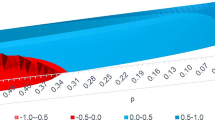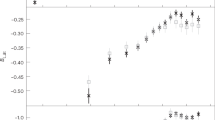Abstract
I THINK everyone will agree with Miss Clark that if the distribution of nebular velocities is considered to be mainly a distance effect, it indicates an expanding system, whereas if it is mainly a time effect it indicates a system which is about to enter on a stage of contraction; and her letter is of service in pointing out the two alternatives. Adopting the hypothesis that it is a time effect, we see from her figures that 100 million years ago the spiral nebulæ (near and far) were moving away from our galaxy at 17,000 km. per sec, and that in the next 50 million years some kind of central attraction acting equally on near and distant nebulæ reduced the recession to 8,500 km. per sec. Formally there is nothing against this; but there is not much temptation to pursue the speculation unless some kind of cosmogonic explanation of the rather odd distribution of velocities and rather unusual law of attraction is offered. The most direct criticism is that the attractive force seems to be very much too large to be due to the ordinary gravitation of the system and has to be invented ad hoc.
Similar content being viewed by others
Author information
Authors and Affiliations
Rights and permissions
About this article
Cite this article
EDDINGTON, A. The Expanding Universe. Nature 132, 406–407 (1933). https://doi.org/10.1038/132406b0
Issue Date:
DOI: https://doi.org/10.1038/132406b0
- Springer Nature Limited





